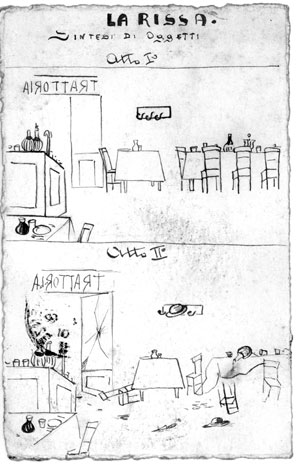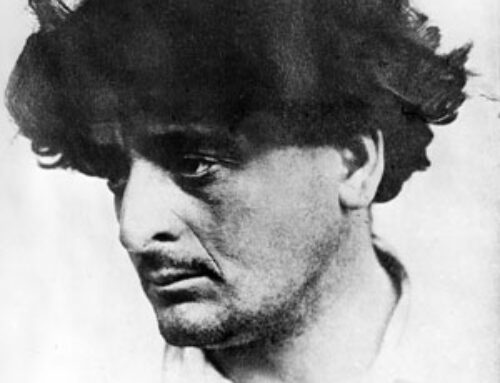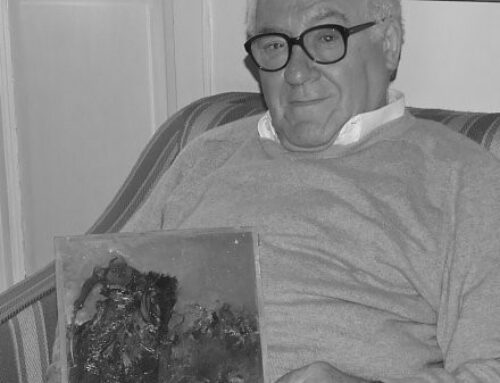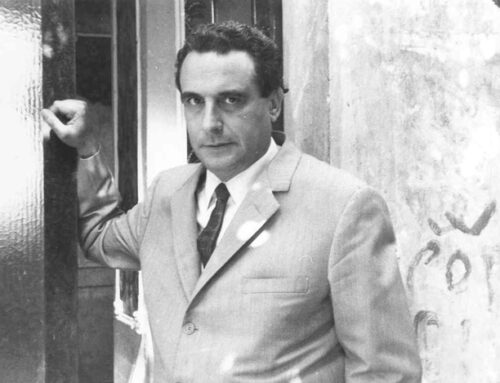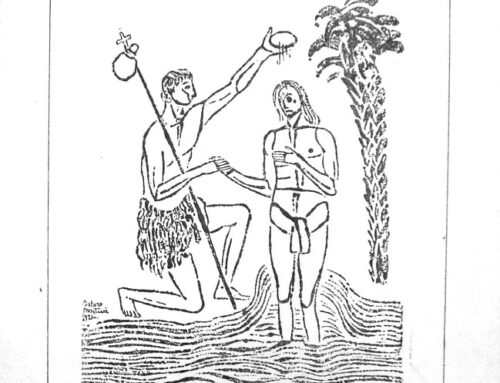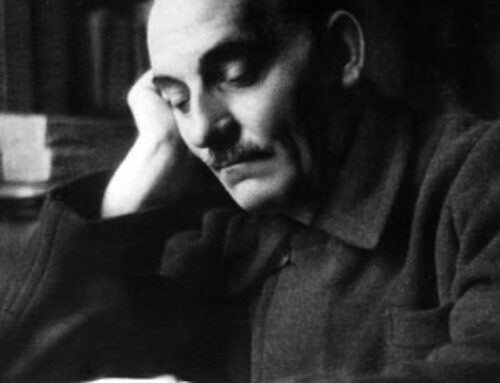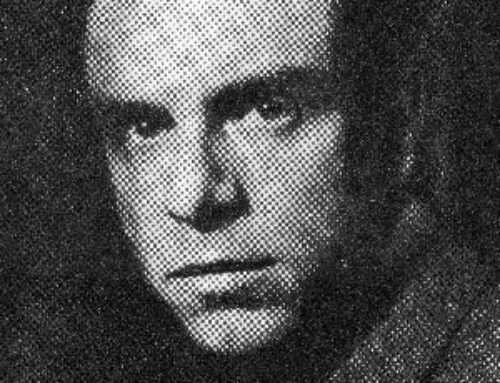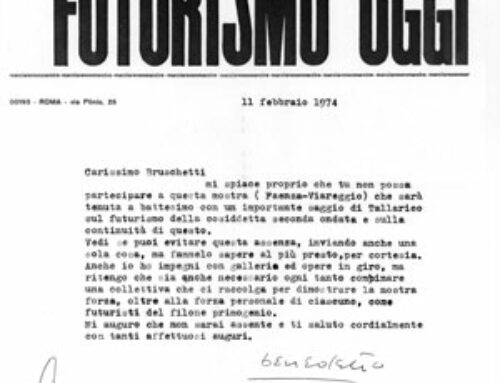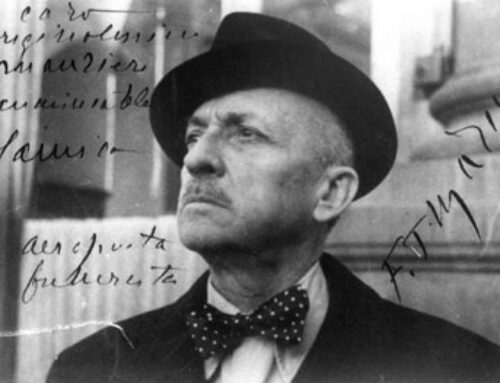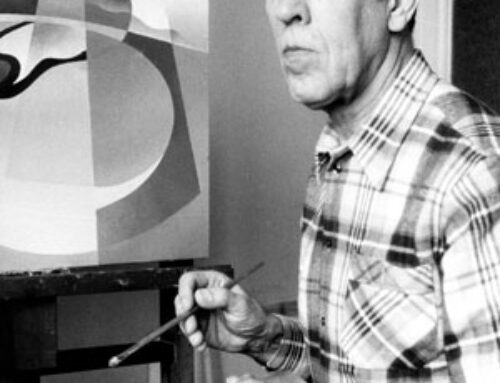(Florence, 1891 – Lipari, Messina, 1954), writer and cultural animator first from the columns of the magazine, “La difesa dell’arte,” then from the newspapers he founded, “Il Centauro” (1913) and “La rivista” (1913). Develops a theory of objective evaluation of the work of art published by Marinetti in 1914 as a manifesto entitled “Weights, Measures and Prices of Artistic Genius,” signed with Bruno Ginanni Corradini. His interest in theater united him with Marinetti, and numerous are his theatrical “syntheses” (“Tricolor,” “Kaiseriana,” “Il Superuomo”). In 1915 he signed with Marinetti and Corra the “Manifesto of Synthetic Futurist Theater,” and in the pages of “L’Italia Fututurista,” founded with Corra in 1916, he published and signed the manifestos “Futurist Science” and “Futurist Cinematography,” (1916). In the same period he published the volumes “Spiritual Adventures” (1916), “Futurist Masquerades” (1917) and “Inquiry into Italian Life” (1919). In 1918, having moved to Rome, he founded “Roma futurista,” an organ of the Futurist political party, with Carli and Marinetti. Also with Carli, he directed the magazine “Dinamo” (1919) and participated with his parolibere plates in the Great National Futurist Exposition at Palazzo Cova in Milan. He joined Fascism and in 1921 distanced himself from the Futurist movement because he disagreed with its founder. In 1923 he directed, again with Carli, “L’Impero,” a daily newspaper liked by Mussolini. Works from this period reflect his political choices: “Benito Mussolini” (1922), “Fascist Coup” (1922), “The Entertainers-B.Mussolini” (1925). The disagreement with Marinetti culminated in the writer’s excommunication proposed by the movement’s founder at the writers’ congress in Bologna in 1933. Even with Mussolini the understanding ended due to the publication of strongly anticlerical pamphlets, which, together with a letter of harsh criticism of the actions of some Fascist hierarchs, cost Settimelli five years of confinement.
The Emilio Settimelli Fund is divided into the following sections: Correspondence, which collects letters addressed to Settimelli from various senders including Balla, Bontempelli, Cangiullo, Buzzi, Carli, Arnaldo and Maria Ginanni, Marinetti, Nannetti Vieri and Neri, Palazzeschi, Pratella, and Soffici. Of particular note, in terms of numerical relevance and precipitous interest, is the core of missives signed by Bruno Corra; Manuscripts, collection of autographs and typescripts attributable to the writing of various works (“Spiritual Adventures,” “The Code of Energetic Life” ) and contributions on the figure of Settimelli signed by other authors (Oscar Mara, Alto Cappa, Vittorio Orazi, Volt).

